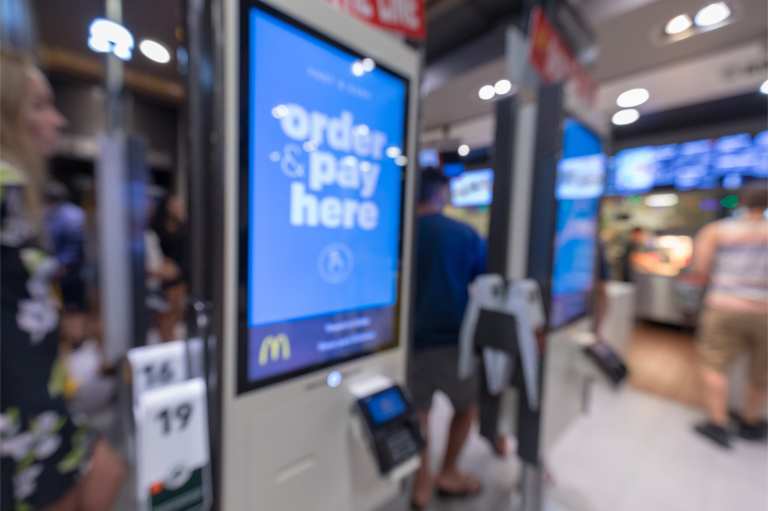
It’s among the most successful businesses in human history, but even mighty McDonald’s can make a colossal blunder. People were not lovin’ it, for instance, when McDonald’s installed self-service kiosks in about 9,000 locations — with no cash payment option — leaving about 8.5 million cash customers hungry. Weirder still was this: McDonald’s knows better than any company on earth that at least 30 percent of U.S. fast food customers pay exclusively with cash.
We’ll skip the obligatory “un-Happy Meal” joke, because that misstep for a fast food titan demonstrates the slings and arrows of quick-service restaurant (QSR) automation, its importance to customer experience, and how even the industry’s best can still get a major rollout wrong. That’s doubly true at a time of fast-paced technological change like we’re experiencing now.
Yet the image of the kiosk is unblemished, as self-service is in high demand and expected to be a $31 billion tech market within four years. QSRs are also putting more focus on the power of loyalty, as is revealed in the new PYMNTS Order To Eat Tracker®, a Paytronix collaboration.
Delivering Customer Loyalty
The coming of kiosks isn’t isolated to the enterprise burger business. Others are using self-service and mobile ordering creatively, as a competitive differentiator. Boston-based vegetarian fast food chain Clover Food Lab is getting one-third of its business via mobile ordering software it wrote itself — a bold move that most small to medium-sized businesses (SMBs) could never take on.
It’s working out for vegetarian chain Clover Food Lab, though: CEO Ayr Muir expects more than half of all orders for the company’s 12 restaurants to come in via app within 24 months. Clover has signed with DoorDash and expects the delivery partnership to immediately increase orders up to 10 percent. Deals like this are becoming pervasive in the QSR and fast casual space as “ghost kitchens” and similar concepts feed an insatiable appetite for fast(er) food sent anywhere.
Creativity in ordering is almost as important as the food itself in some cases. Dallas-based Wingstop is has arranged it so gamers on Amazon’s Twitch live streaming service can use their Wing Calculator within the platform before placing their order. Domino’s has GPS tagged 400 U.S. stores so that managers can get a complete view while customers track their orders online.
With all the attention being paid to high-tech ordering, many experts believe that customer experience (and personal taste) will decide the winners and losers in the mobile order ahead race. Loyalty is the real prize, and smart brands have gotten out in front of the challenge. Sandwich favorite Jimmy John’s rolled out its brand new Freaky Fast Rewards program in 2019 powered by the Paytronix engagement platform, logging 1.7 million redemptions in the first 10 months.
Human or Robot … You Decide
It’s easy to see a push for automated kiosks as management trying to do away with pesky human workers. It’s actually not that simple. Much of the pressure to adopt self-service tech and automation is coming from consumers themselves. People are quirky: sometimes they want to interact with another human, sometimes not.
What is being discovered through the use of integrated platforms like Paytronix and others is the kind of kiosk experiences that people like, the goods and services they deem appropriate for human vs. robot transactions, and their evolving definition of “seamless experience.”